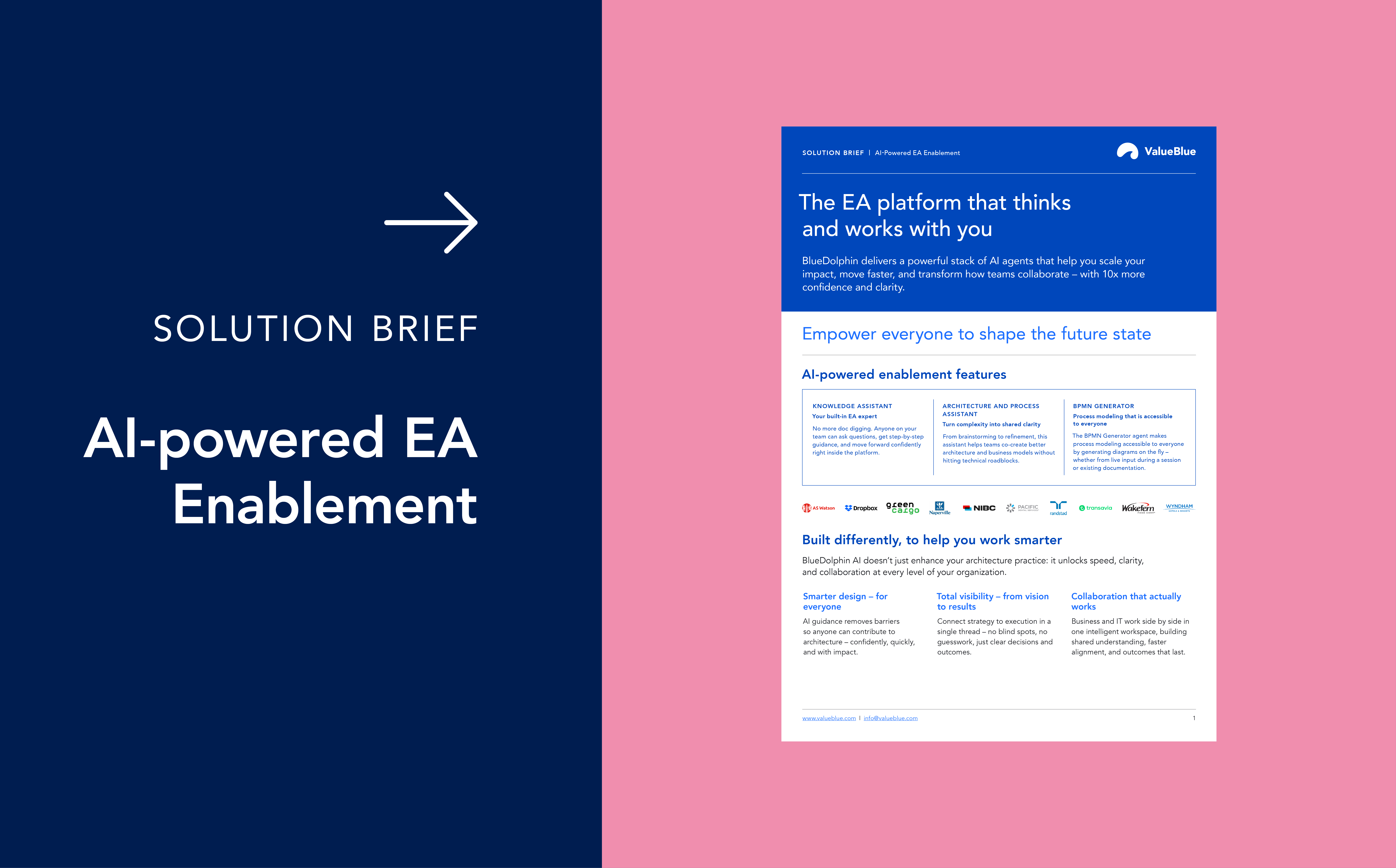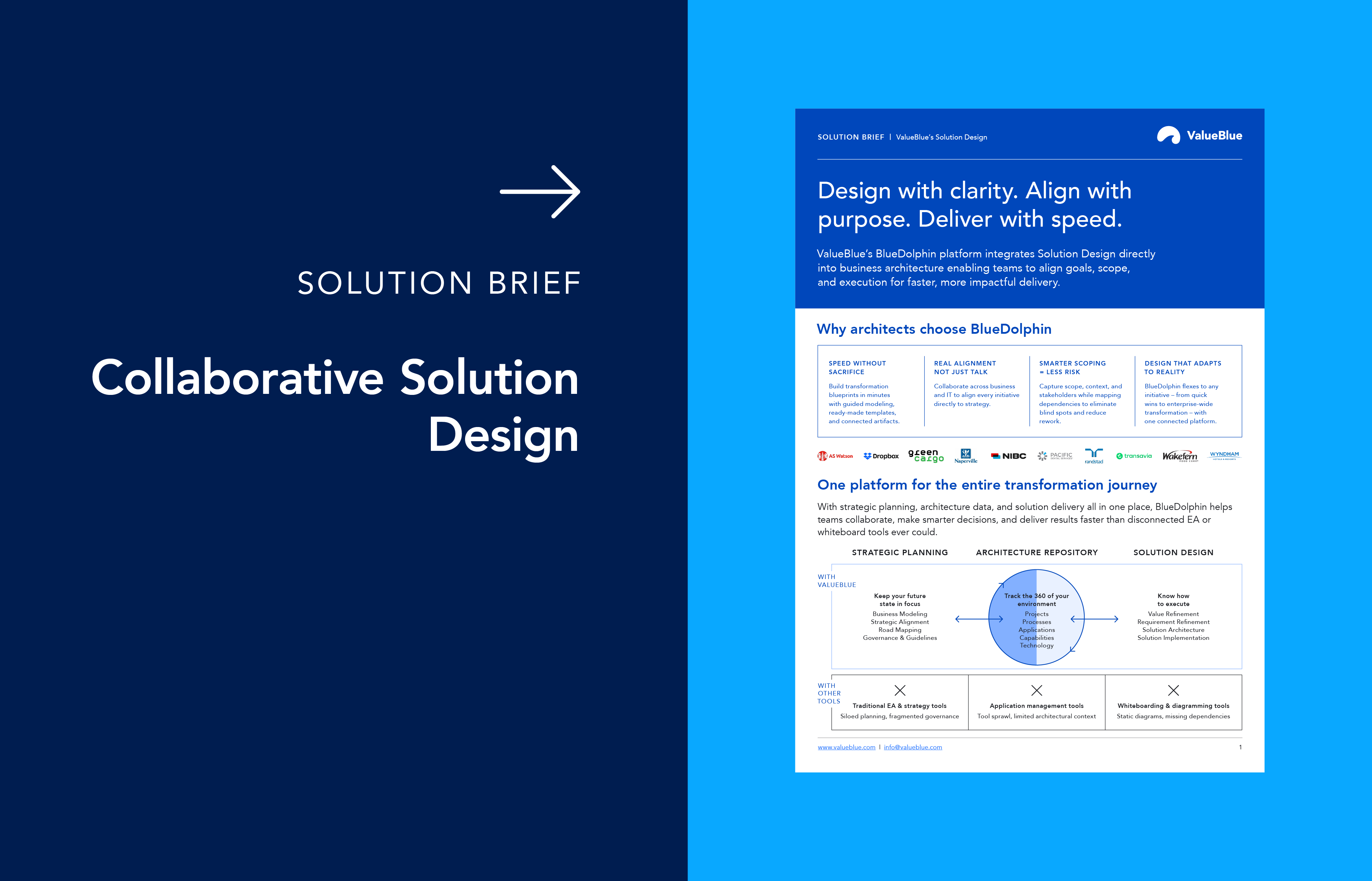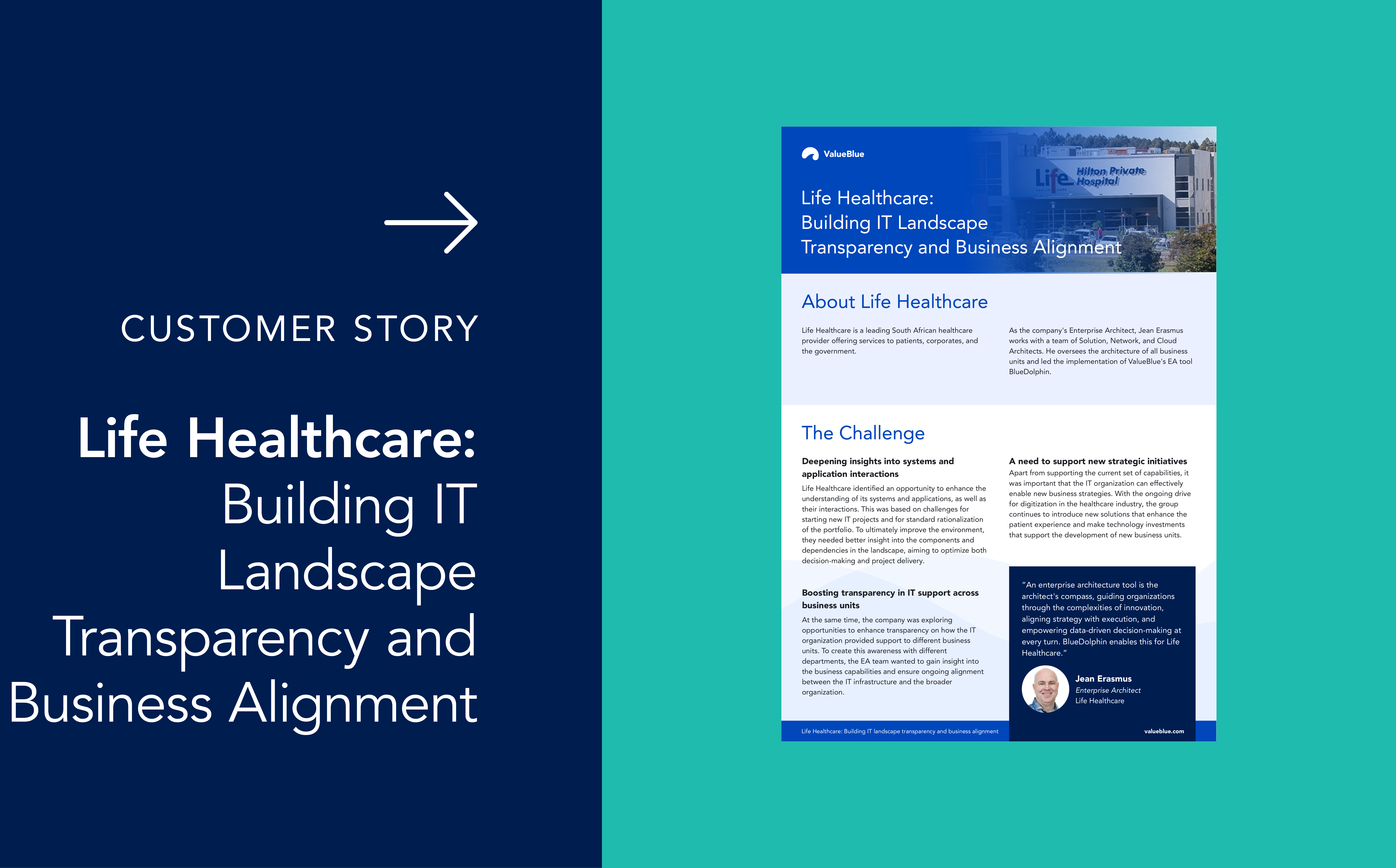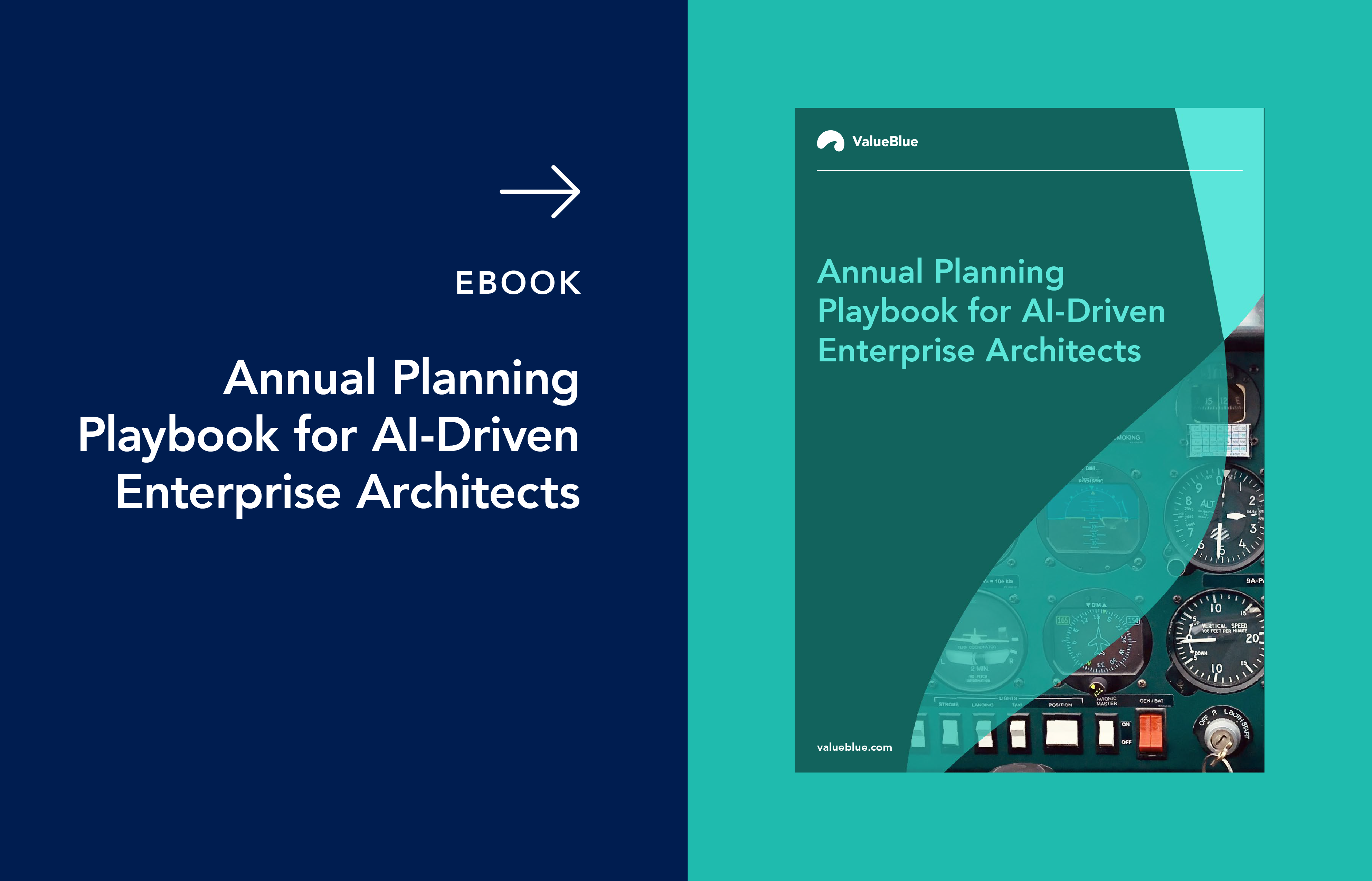Top 10 Benefits of Enterprise Architecture for Your Business
Staying aligned, agile, and innovative in today’s fast-paced business environment feels like chasing a moving target. That’s where Enterprise Architecture (EA) comes in. It's not just an IT framework – it’s a strategic tool that helps you align your business goals with technology, streamline operations, reduce risk, and adapt quickly to change.
Here are 10 powerful ways EA can benefit your business.
1. Align your technology and business strategy
If your business strategy and IT roadmap aren’t aligned, you risk spending time and money on tools that don’t support your goals. EA helps you bridge that gap.
With Enterprise Architecture, you can map your strategic objectives to the systems and technologies you rely on daily. This ensures your technology stack directly supports business outcomes such as market expansion, customer experience, or operational efficiency.
For example, if your business prioritizes sustainability, EA can help you adopt cloud-based systems that reduce your physical infrastructure needs. Alternatively, if speed to market is crucial, Enterprise Architecture ensures that your development tools and processes are agile enough to support it.
By aligning your tech and strategy, your investments become smarter, more focused, and better aligned with long-term success.
2. Improve decision-making across your organization
Business decisions are only as good as the information behind them. EA empowers your leaders and managers to make faster, smarter decisions based on real-time, interconnected data.
Enterprise Architecture provides a comprehensive view of how systems, processes, and roles are related. So, when a new opportunity or risk arises – such as entering a new market or responding to a cybersecurity threat – you can assess how it will impact your entire operation.
With this visibility, you avoid siloed thinking. Teams across your business – from operations to marketing to finance – can make coordinated decisions supported by a shared understanding of systems and goals.
3. Simplify and streamline your tech stack
Over time, businesses often accumulate a patchwork of software, platforms, and tools – many of which serve overlapping or outdated functions. EA helps you clean up that mess.
By creating an inventory of your existing technologies, Enterprise Architecture highlights redundancies, inefficiencies, and compatibility issues. You’ll be able to identify systems that can be consolidated, upgraded, or eliminated altogether.
This doesn’t just simplify your IT environment. It reduces maintenance costs, shortens onboarding for new employees, and improves system performance. Your teams spend less time troubleshooting and more time doing meaningful work.
4. Make your operations more efficient
Every business has inefficiencies – manual processes, outdated workflows, and systems that don’t talk to each other. EA helps you identify and fix them.
Through process modelling and architecture diagrams, Enterprise Architecture provides a clear view of your operations from end to end. You can identify bottlenecks, duplication, and gaps in accountability, and then redesign processes to improve their flow.
For instance, if your customer onboarding process spans three systems and multiple departments, EA can help you streamline it into a single, integrated workflow. That means fewer errors, faster delivery, and a better customer experience – all while saving time and resources internally.
5. Foster better collaboration across teams
Cross-functional collaboration can be tough, especially when teams use different tools, speak different “languages,” or work toward different goals. Enterprise Architecture fosters unity by creating a shared understanding of your business structure.
With clearly documented processes, data flows, and responsibilities, EA helps your teams break down silos. It gives everyone – from IT to HR to Finance – a common reference point, making communication and collaboration easier.
This is especially valuable for large projects such as digital transformation or system migrations. When everyone understands how their role contributes to the big picture, you reduce friction, delays, and misalignment.
Want to see Enterprise Architecture in practice? Book a short BlueDolphin demo.
Explore how you can design and align your transformation initiatives more effectively - from strategy to execution.
6. Increase your business agility and innovation capacity
Agility means being able to adapt quickly when the market changes, and Enterprise Architecture is your blueprint for doing that without chaos.
EA enables you to evaluate how new initiatives (e.g., adopting AI, expanding into new regions, or launching a new product) will impact your existing systems and workflows. That means you can move forward with innovation while managing risk and complexity.
Instead of tearing things down and rebuilding from scratch, you’ll be able to build on what already works. EA supports modular thinking – letting you make changes in one area without breaking others.
This flexibility is crucial for businesses seeking to innovate more quickly and effectively.
7. Strengthen risk management and compliance
Your business must manage risk effectively, whether it’s data privacy laws, financial regulations, or cybersecurity threats. Enterprise Architecture helps you take a proactive, structured approach.
EA makes it easy to track where sensitive data resides, how it flows through your systems, and who has access to it. This visibility helps you detect vulnerabilities before they become threats and stay compliant with regulations such as GDPR, HIPAA, or SOX.
When regulations change, Enterprise Architecture allows you to assess the impact quickly and implement the necessary updates without major disruption. It also ensures that your response to audits, security incidents, or data breaches is faster and more coordinated.
8. Reduce costs by optimizing your resources
Cost savings may not be the only reason to implement EA, but they are undoubtedly one of the most tangible benefits. Enterprise Architecture helps you make the most of your technological, human, and financial resources. Beyond simply eliminating duplicate systems and reducing shadow IT, it can help you optimize workloads and improve resource planning. In this way, you will ensure your teams work on high-value tasks rather than firefighting inefficiencies.
This is especially important for businesses under budget pressure or undergoing cost-cutting initiatives. Enterprise Architecture provides the data and clarity to make informed decisions that improve efficiency without compromising performance or quality.
9. Support your digital transformation journey
Digital transformation isn’t just about adopting new tools – it’s about reshaping how your business operates. EA serves as the backbone for this journey.
It helps you define your current state, envision your future goals, and create a clear roadmap for achieving them. Enterprise Architecture also ensures that all transformation initiatives – from cloud adoption to automation – are aligned with business priorities.
Instead of jumping on trends, you can pursue meaningful innovation that adds value. EA also helps you manage dependencies, minimize disruptions, and ensure that your transformation projects deliver measurable results.
10. Build a culture of continuous improvement
The best businesses don’t stand still – they constantly evolve. EA helps you build systems and processes that support continuous learning, improvement, and innovation.
With real-time data and regular performance reviews, Enterprise Architecture enables you to identify areas for improvement and respond promptly. It transforms your business into a learning organization, where changes are tracked, evaluated, and continually improved over time.
You’ll also be better positioned to adopt new technologies, respond to customer feedback, and fine-tune your operations as the business grows. EA gives you the tools not just to keep up, but to stay ahead.
Get started today!
Enterprise Architecture provides a clear path forward for businesses that are growing, transforming, or simply seeking to stay competitive. Whether you’re trying to innovate, cut costs, or scale with confidence, EA is a proven approach to turning complexity into clarity – and ideas into results. For that, you need the right tools such as BlueDolphin. Want to take your first step? Book a tailored demo of our Enterprise Architecture platform.
Book a demo
Want to discover how our tool can further enhance your Enterprise Architecture? Fill in the form!
Have questions about Enterprise Architecture best practices?
Our experts are happy to help.





